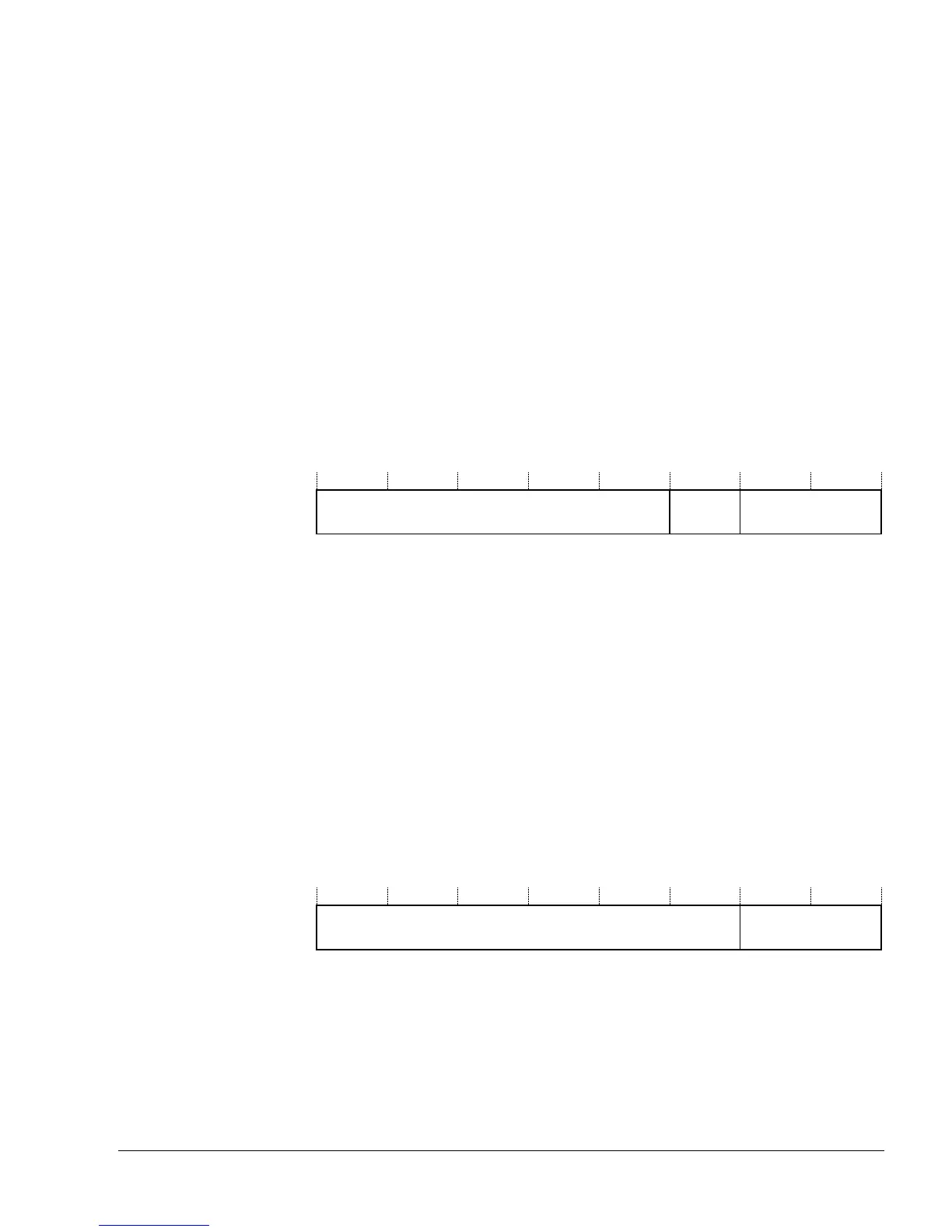System Control Coprocessor
ARM DDI 0301H Copyright © 2004-2009 ARM Limited. All rights reserved. 3-87
ID012310 Non-Confidential, Unrestricted Access
Invalidate TLB unlocked entries
Invalidate TLB unlocked entries invalidates all the unlocked entries in the TLB. This function
causes a flush of the prefetch buffer. Therefore, all instructions that follow are fetched after the
TLB invalidation.
Invalidate TLB Entry by MVA
You can use Invalidate TLB Entry by MVA to invalidate all TLB entries for an area of memory
before you remap.
You must perform an Invalidate TLB Entry by MVA of an MVA in each area you want to remap,
section, small page, or large page.
This function invalidates a TLB entry that matches the provided MVA and ASID, or a global
TLB entry that matches the provided MVA.
This function invalidates a matching locked entry.
The Invalidate TLB Entry by MVA operation uses an MVA and ASID as an argument.
Figure 3-47 shows the format of this.
Figure 3-47 TLB Operations Register MVA and ASID format
Invalidate TLB Entry on ASID Match
This is a single interruptible operation that invalidates all TLB entries that match the provided
ASID value.
This function invalidates locked entries but does not invalidate entries marked as global.
In this processor this operation takes several cycles to complete and the instruction is
interruptible. When interrupted the R14 state is set to indicate that the MCR instruction has not
executed. Therefore, R14 points to the address of the MCR + 4. The interrupt routine then
automatically restarts at the MCR instruction. If the processor interrupts and later restarts this
operation, any entries fetched into the TLB by the interrupt that uses the provided ASID are
invalidated by the restarted invalidation.
The Invalidate TLB Entry on ASID Match function requires an ASID as an argument.
Figure 3-48 shows the format of this.
Figure 3-48 TLB Operations Register ASID format
3.2.24 c9, Data and instruction cache lockdown registers
The purpose of the data and instruction cache lockdown registers is to provide a means to lock
down the caches and therefore provide some control over pollution that applications might
cause. With these registers you can lock down each cache way independently.
Modified virtual address
31 8 7 0
SBZ ASID
1112
31 8 7 0
SBZ ASID
